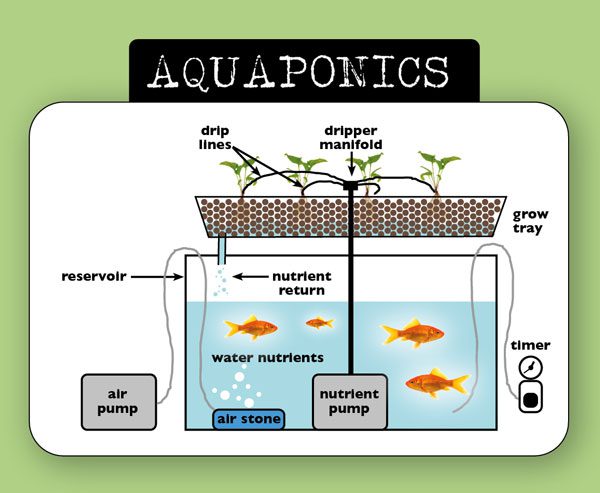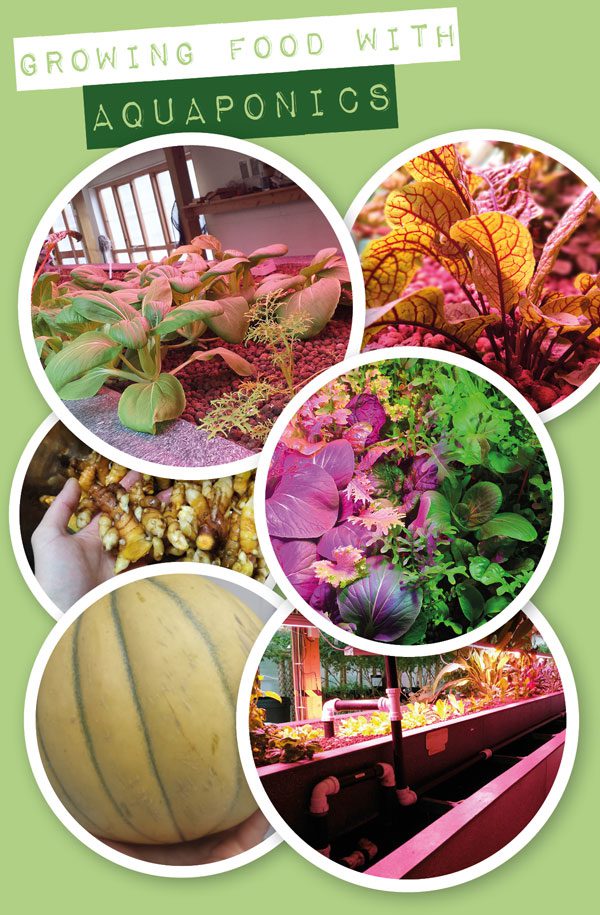What if I told you there was a way that you could provide most of your nutritional needs from one single growing project? Would you think that it’s so hi-tech that it must be dependent on a controlled environment, chemicals and machinery, and inherently polluting?
What if I told you it’s been around for thousands of years and was used by the Aztecs, amongst others? Would such a prospect excite you? Because it certainly excited me four years ago when I was first introduced to the concept of aquaponics.

Gotta Love It
As a foodie and former restaurant manager, I was extremely excited by the revelation that all this can be provided by one unit. At the time, I had just joined the Incredible Aquagarden in Todmorden, an urban farming educational centre for schools (now sadly closed).
Watching an abundance of leafy greens growing in beds suspended above tanks roiling with Tilapia fish made me wonder; what else is possible to cultivate this way? The Aztecs, of course, didn’t have greenhouses, time-regulated valves, or LED lights automating the whole process. They used what they had, building rafts of reeds on which to plant crops, and floating them on lakes full of wild fish for the nutrients. It must have been quite the life.

The technique of combining soilless growing with fertilizer produced solely by fish waste has been around for quite literally ages. Its recent re-discovery with some technological additions is a real game-changer. But the principle stays the same – your ‘plants’ fertilizer is good old fish poop.
What To Grow
As I learned more about how our system worked, I imagined pushing it to produce more than chard and cress. Aquaponic systems are known to be nitrogen-rich, which the accepted wisdom at the time held to be great news for the greens, but not the roots or fruits.
Two years later, this system proved to be so healthy and diverse in life that growing melons, watermelons, turmeric, and lemongrass was as easy as the first radish I grew.

The secret is in that diversity. Just five worms added to the clay-pebble-filled grow bed, above a one-meter deep fish tank, quickly spread and populated the bed. Shortly after came springtails and centipedes, instantly creating an environment where the crops are protected from pests.
The worms did what they do in the soil; eat up dead parts of roots and poop out the worm castings, which is great news for the teeny tiny living things we couldn’t see.
Rapid Growth
What we could see though, was the magnificent growth. Water-loving plants like cucumbers and watermelons could double in size during a work shift. I never knew growing turmeric in the UK was possible, let alone so easy.
When we harvested it, I wondered what to do with the leaves. A quick google told me it was used in Indonesian cooking. I am no specialist in this field, but I happened to know a woman who was cooking traditional Indonesian food in my town. Her eyes nearly popped out when she saw the leaves I gave her to use.
A Valid Alternative
Despite this incredible place closing its doors, I am eternally grateful for the chance to learn that such great results can be achieved with a dash of imagination. There are some fantastic aquaponic farms and research centres continuing the job of innovating and making these systems more efficient.
With the ever-increasing demand on the world’s food supply chain, we have to expand our use of so-called ”alternative” growing practices. Aquaponics has thousands of years of successful growing to recommend it.